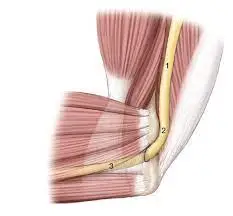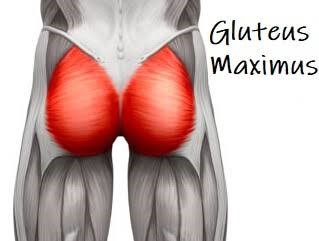10 Best Exercises For Snapping Elbow Syndrome
Table of Contents
Introduction:
A clicking or popping sensation in the elbow, often accompanied by pain, is a sign of Snapping Elbow Syndrome, also known as Snapping Triceps Syndrome. Either the lateral (outer) or medial (inner) side of the elbow may snap like this.
The elbow joint is a complicated hinge joint that connects the radius and ulna, the upper arm, or humerus, to the forearm bones. An alternative term for snapping elbow syndrome might be snapping triceps syndrome. Bending the elbow causes the triceps to snap. The inside portion of the triceps will snap against the inside of the elbow when the elbow is flexed.
An additional tendon from the medial triceps increases the risk of snapping. The elbow becomes uncomfortable and inflamed. Furthermore, the close connection of the ulnar nerve to the snapping muscle causes the outer hand to become numb and uncomfortable.
Flexibility and endurance and for reducing elbow pain to be reduced Exercises for Snapping Elbow Syndrome are crucial. These activities shouldn’t worsen the pain, even though some people may feel uncomfortable. If it aches, stop exercising; if not, try going more slowly.
Causes:
When a tendon, ligament, or nerve in the elbow moves unnaturally across a bone while in motion, it can cause snapping elbow syndrome, which is characterized by a snap, pop, or click. Depending on the reason and intensity, it may be painless or painful.
The Ulnar Nerve Dislocation or Subluxation
- The ulnar nerve, which runs along the inner elbow, slides out of its natural groove and breaks over the medial epicondyle.
Triceps Snapping Syndrome
- It may happen with or without involvement of the ulnar nerve.
Trauma or Injury to the Elbow
- Stabilizing tissues may be torn or stretched by injury, causing tendons or nerves to move abnormally.
Repetitive motion or overuse
- Repeated elbow bending, stretching, or turning wears down tendons or nerves, causing instability or irritation.
Signs and symptoms:
Sounds or Feelings of Snapping
- This is the main feature. A certain point in the range of motion, typically during elbow flexion and extension, is where the snapping or popping sound or sensation is noticed.
- One snap or several snaps may be used.
- A single snap or several snaps are both possible.
Restricted Motion
- During some motions, the elbow may feel suddenly locked or stiff.
- To keep it from snapping, you could consciously refrain from moving it.
Pain
- It could or might not hurt to snap.
- If so, the pain is frequently restricted to the elbow’s inside (medial) or outside (lateral), depending on where the snap occurred.
Instability
- Some people may report feeling unstable or as though their elbow is unstable or has the potential to “pop out of place.”
Locking or Catching
- The elbow may feel locked or stuck, but then snap out of it when a loose body (a fragment of bone or cartilage) is the cause.
Getting Worse with Activity
- Repetitive activities like typing or hammering, or sports like throwing or lifting weights, might exacerbate symptoms.
- May decrease with modest activity or rest.
Weakness
- In extreme situations, hand muscle weakness may occur, which could make fine motor abilities challenging.
Tenderness and Swelling
- There may be localised swelling and tenderness to the touch in the area of the snapping, especially if there is associated inflammation.
Exercise’s advantages:
Especially in the early stages or when the snapping is not severe, physiotherapy and an organised exercise regimen are frequently the mainstays of treatment for Snapping Elbow Syndrome.
Encourages Healing and Recovery
- When exercise is performed correctly, it increases blood flow to the wounded area, helping to transport oxygen and essential nutrients to the tissues.
- This helps any inflammation or injury surrounding the tendon or nerve to recover.
Enhances Supporting Muscle Strength
- Enhances joint stability by strengthening the muscles surrounding the elbow, particularly the triceps, biceps, and forearm muscles.
- Stops some tendons from being overused and perhaps breaking.
Corrects Muscle Imbalances
- By strengthening the surrounding muscles, especially the triceps and forearm muscles, exercises can increase stability and lessen the chance that the structures would sublux ( fall ).
- The tendon can be stabilized and kept from snapping, for instance, by strengthening the triceps’ medial head.
Increases Flexibility
- Stretching activities can help loosen up tense muscles or tendons that are causing the snapping.
- Increases the elbow’s range of motion, which lowers the possibility of structures locking or breaking.
Reduced Pain
- A variety of techniques can be used in an exercise regimen to control inflammation and pain.
- Stretching may be necessary to increase the flexibility of tense muscles like the forearms and triceps.
Lessens Irritation and Inflammation
- Exercise that is regulated and low-impact can improve blood flow and promote recovery.
- Mild mobility exercises might help lessen the inflammation or edema that’s causing the snapping.
Makes Joint Mechanics Better
- Assists in fixing any imbalances or improper biomechanics that could be causing the snapping feeling.
- Promotes easier joint motion and better coordination.
Restores Movement Function
- Allows you to return to your regular hobbies, career, or sports with confidence.
- Uses suitable motion patterns and strength balance to stop recurring.
Before beginning an exercise program, take a look at the following safety measures:
Before starting any fitness program, take a few precautions and maximize the advantages.
Consult your physician or physiotherapist to determine which exercises are most appropriate for your particular issue. It’s important to understand your body’s demands and refrain from pushing yourself when it hurts.
Work your way up to more difficult workouts by beginning with low-impact ones until you can handle greater pain. The key to preventing repetitive injuries is maintaining good form and posture. If you’re unsure about how to begin exercising correctly, get advice from a doctor. To prepare your joints and muscles for the work at hand, warm up before beginning any exercise.
Exercises For Snapping Elbow Syndrome:
Wrist circle
- Start in a standing position on the floor.
- Your hand should be at ease while you straighten out one arm in front of you.
- Stretch your hand out and gently create a loose fist.
- Make slow circular motions with your wrist.
- As wide as it is comfortable for you, make the circles.
- Repeat 10 clockwise circles, then 10 counterclockwise circles.
- Then return to your neutral position.
- Then relax.
- Repeat these exercises 5 to 10 times.
- Do the same with your opposite arm.

Elbow bend
- Rest your arm at your side, whether standing or sitting.
- Palm down and forward.
- Raise your hand toward your shoulder while slowly bending your elbow.
- Concentrate on a fluid and careful motion.
- Hold this position for a few seconds.
- Then return to your neutral position.
- Then relax.
- Repeat these exercises 5 to 10 times.

Wrist Extension
Strengthening can be improved with a little resistance.
- Place yourself in the chair closest to the table to begin.
- Take a full bottle of water or a light dumbbell in your hand.
- With the palm down.
- To gradually elevate the weight, stretch your wrist upward.
- Make sure you’re not swinging the weight and that the action is controlled.
- Hold this position for a few seconds.
- Lower the weight back down gradually.
- Then return to your neutral position.
- Then relax.
- Repeat these exercises 5 to 10 times.
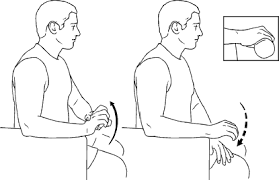
Wrist Flexion
- Begin by settling into the chair.
- Take a seat close to the table.
- With your palm facing up, hold a full water bottle or a light dumbbell in your hand.
- Make a wrist bend.
- Pull the weight up and gently elevate it toward the ceiling.
- There should be no swinging, and the movement should be controlled and gradual.
- Hold this position for a few seconds.
- Then return to your neutral position.
- Then relax.
- Repeat these exercises 5 to 10 times.
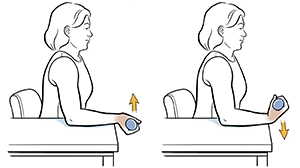
Wrist Flexor Stretch
- Start on the floor in a standing position.
- Extend one arm shoulder-height in front of you.
- Holding your hand up.
- Press the palm of your outstretched hand lightly.
- That your fingers are pointing toward the ground.
- Maintain a straight elbow.
- Hold this position for a few seconds.
- Your forearm should feel stretched from within to out.
- Then return to your neutral position.
- Then relax.
- Repeat these exercises 5 to 10 times.

Wrist Extensor Stretch
- Start on the floor in a standing position.
- Extend one arm out, shoulder height.
- Make sure your palm is facing the ground.
- Using your other hand, carefully grasp the fingers of your outstretched hand.
- Your fingers should point toward the floor as you progressively bend your wrist downward.
- Continue gently pulling your hand back toward your body until the top of your forearm feels slightly to fairly stretched.
- Throughout the stretch, keep your elbow straight.
- Hold this position for a few seconds.
- Don’t push the stretch and remember to breathe properly.
- Then return to your neutral position.
- Then relax.
- Repeat these exercises 5 to 10 times.
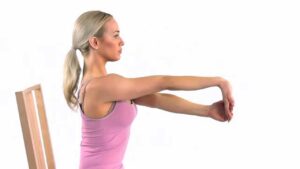
Isometric Elbow Flexion
- Start with the seating position on the chair.
- Ensure that your elbow is 90 degrees bent.
- Put your palm flat against the underside of a strong table or against a wall.
- Try gently bending your elbow even more, as though you were lifting the table or pushing the wall away.
- There is no real movement because of the resistance provided by the table.
- Pay attention to the tightness in the muscle at the front of your upper arm.
- Hold this position for a few seconds.
- Release the stress gradually.
- Then return to your neutral position.
- Then relax.
- Repeat these exercises 5 to 10 times.

Ball squeeze
- Start on the floor in a standing position.
- Locate a ball of soft foam.
- Wrap the ball with all five fingers.
- Next, squeeze the ball.
- Hold this position for a few seconds.
- Then let your hand relax.
- Then return to your neutral position.
- Then relax.
- Repeat these exercises 5 to 10 times.

Forearm Pronation and Supination
- Start in a standing position on the floor.
- Keep your elbow bent at a 90-degree angle.
- Make sure your palm is toward the ceiling by slowly rotating your hand.
- Rotate your hand slowly in the other direction while keeping your palm pointed down toward the floor.
- Make a slow, careful motion while turning back and forth.
- Then return to your neutral position.
- Then relax.
- Repeat these exercises 5 to 10 times.
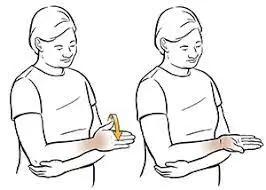
Forearm Pronation and Supination with Light Resistance
- When sitting on a chair, your arm should be at a 90-degree angle.
- Placing your forearm on your thigh allows your hand to rest over it.
- Get a light dumbbell.
- Use it like a hammer, holding it vertically.
- With the palm toward the floor, slowly twist your hand inward.
- Let the dumbbell’s weight help with the motion.
- Your palm should be toward the ceiling as you slowly spin your hand outward.
- Make sure the motion is fluid and under control.
- Then return to your neutral position.
- Then relax.
- Repeat these exercises 5 to 10 times.

What precautions should be followed when working out?
Get Well Warmed Up
- Always begin with five to ten minutes of gentle movements to improve blood flow and prepare your elbow for action.
Begin gently and slowly.
- Begin with simple exercises and progress as you can.
- Stay away from any movement that hurts, pinches, or snaps loudly.
Prevent Overuse and Repeated Stress
- Try to keep the number of sets and repetitions to a minimum in the beginning.
- To promote recovery and avoid tendon overuse, take rest days.
Pay Attention to Form and Technique
- Exercises should be performed slowly and carefully; hurrying through them might lead to poor mechanics and worsen snapping.
- To keep an eye on technique, use mirrors or supervision from experts.
Make sure to stretch carefully.
- Without pushing hard yourself, stretch the muscles surrounding the elbow, such as the triceps and forearm flexors/extensors.
- To prevent damaging the joint, refrain from bouncing or overstretching.
Observe the symptoms
- Keep an eye out for symptoms such as increasing snapping frequency, numbness, tingling, or worsening pain, since these might point to nerve involvement or the need for more advanced therapy.
When did you quit working out?
Sudden or Severe Pain
- You should immediately stop exercising if you get a severe, stabbing pain.
- This can be a sign of joint injury, nerve involvement, or tendon irritation.
Enhanced Popping or Snapping
- The activity may be making the issue worse if the popping noise gets louder, more frequent, or more painful.
Redness or Swelling
- Increased inflammation may be indicated by new or worsening elbow edema, redness, or warmth.
Feeling numb or tingly
- These could indicate nerve involvement. Stop and get help.
Lack of Function or Strength
- Exercise should be stopped, and professional advice should be sought if your grip becomes weak or you are unable to move your elbow through its natural range.
Overtraining or Fatigue
- The elbow may take longer to recover if overworked. Pay attention to your body recovery includes rest.
If you suffer from Snapping Elbow Syndrome, which workouts should you avoid?
Avoiding workouts and activities that produce pain or snapping is essential if you have Snapping Elbow Syndrome, since they may worsen the condition and create more irritation of the tendon.
Deep Elbow Flexion and Extension Exercises
- Full range of motion exercises, particularly those involving deep elbow flexion, should be avoided as they frequently result in this snapping.
Lying Triceps Extensions
- It can cause snapping because it puts a lot of strain on the triceps in a deep, stretched posture.
Overhead Triceps Extensions
- High levels of elbow flexion during overhead extensions might irritate the ulnar nerve and triceps tendon.
Bench presses and push-ups with a close grip
- Narrow grips on these workouts can put more strain on the medial triceps and elbow joint, which frequently results in snapping.
Dips
- For the same reasons, bodyweight dips can also be unsafe. They can lead to the instability of the structures and put a great deal of strain on the triceps.
Throwing or Swinging Motions
- Tennis serves, baseball, and kettlebell swings are examples of throwing or swinging motions that may worsen the soft tissue structures involved in snapping.
- These motions include high-velocity elbow extension and rotation.
Heavy Pulling Movements
- Deadlifts, barbell rows, weighted pull-ups
- These can strain the forearm muscles and increase elbow instability, especially if grip is tight or form breaks down.
Summary:
A popping, clicking, or snapping sound or sensation in the elbow during movement is a symptom of the very rare illness known as Snapping Elbow Syndrome. Even while it’s usually harmless, if ignored, it can irritate, result in pain, or even worsen joint problems. Restoring normal function and alleviating symptoms can be achieved by identifying the underlying reasons and doing targeted workouts.
Many people are able to successfully manage their symptoms with the correct mix of rest, focused workouts, and a gradual return to activities. Do regular activities, pay attention to your body, and get medical help if the situation doesn’t get better.
FAQ:
Snapping Elbow Syndrome: What is it?
A palpable or audible “snap,” “pop,” or “click” in the elbow is a defining feature of the odd illness known as “Snapping Elbow Syndrome.”
Is Snapping Elbow Syndrome the cause of all elbow popping or clicking?
No. The sound or sensation is often accompanied by pain, numbness, tingling, or weakness, which makes Snapping Elbow Syndrome unique. Additionally, a particular tendon or nerve moving, which is frequently felt or even visible, is the immediate cause of the injury.
What are the primary signs and symptoms?
Elbow pain, either inside or outdoors.
The fingertips may feel numb, tingly, or experience other sensations.
Hand weakness.
The elbow joint is swollen and stiff.
Who has the highest chance of getting Snapping Elbow Syndrome?
Although the illness is uncommon, young, active people are most likely to have it. People who perform repetitive elbow flexion and extension, such as bodybuilders, weightlifters, or throwers, may be prone to injury.
How is snapping elbow syndrome treated?
Splints to keep the elbow stable. To lessen pain, apply an ice pack or a hot water bag. In complex cases, surgery is advised, which may entail cutting and reattaching the tendon as well as releasing an inflamed ulnar nerve and relocating it to the front of the inside of the elbow.
What is the frequency of snapping elbow syndrome?
It is possible to confuse the rare condition known as snapping elbow with more frequent illnesses like medial and lateral epicondylitis. Symptoms manifest during active activity.
How dangerous is Snapping Elbow Syndrome?
It’s usually painless and harmless. The doctor should be consulted if it is followed by pain, weakness, or numbness, as these symptoms may indicate an underlying problem such as nerve compression or joint instability.
Can Snapping Elbow Syndrome be effectively treated with exercise?
Indeed. Exercises that involve stretching and strengthening help reduce stress, stabilize the elbow, and stop tendons or nerves from moving abnormally. Exercises should be performed carefully, though, ideally under a professional’s supervision, particularly if nerve involvement is detected.
Is it possible for Snapping Elbow Syndrome to resolve itself?
Sometimes, particularly if it results from overuse or little tendon movement. Activity moderation, ice, and rest can all be beneficial. Physical treatment or possibly a surgical examination may be necessary for persistent or worsening symptoms.
When ought I to visit a physician?
If your snapping is painful or prolonged, you should consult a physician.
You feel tingly or numb, particularly in your little and ring fingers.
Weakness in arm strength or grip.
Restricted elbow mobility or locking.
Does Snapping Elbow Syndrome ever require surgery?
Surgery may be suggested to solve the problem in rare instances when conservative therapies are ineffective or if there is structural damage (such as nerve entrapment, bone fragments, or tendon instability).
References:
- Masci, L. March 8, 2025. Don’t ignore the causes and treatments of snapping elbow syndrome. London Sport Doctor. Snapping-elbow syndrome: https://sportdoctorlondon.com for more information
- Patel, A., MD. April 24, 2024. The top three snapping elbow syndrome exercises. Sports-health. This article discusses the top exercises for people with snapping elbow syndrome.
- A few elbow exercises. (n.d). Versus Arthritis. https://versusarthritis.org/about-arthritis/exercising-with-arthritis/healthy-joint-exercises/elbow-exercises/
- Elbow snapping (n.d.). Snapping elbow: https://www.artisanorthopaedics.sg/conditions/elbow
- Fletcher, J. (October 27, 2023). Exercises, symptoms, therapy, and everything else you need to know about ulnar nerve entrapment. Articles/318043: https://www.medicalnewstoday.com
- November 2, 2022; Elbowadmin. ElbowDoc. Snapping Triceps. https://www.elbowdoc.co.uk/snapping-triceps/
- H. I. F. Physiotherapist (2019, June 10). Rebalance Sports Medicine: Elbow Pain: Causes, Signs, Treatment, and Exercises. Rebalance Sports Medicine | Chiropractic, massage, and physiotherapy in downtown Toronto. Elbow pain: https://rebalancetoronto.com/
- Elbow popping symptoms, causes, and remedies | Banner Health, n.d. https://www.bannerhealth.com/healthcareblog/better-me/elbow-popping symptoms, causes, and remedies
- Image 7, Eleni Fit. March 13, 2024. 15 minutes Yoga style deep tension relaxation stretches for neck, shoulder, and back discomfort | QUICK HELP [Video]. YouTube. YouTube video: https://www.youtube.com/watch?v=6FyHoo4Vfxg


